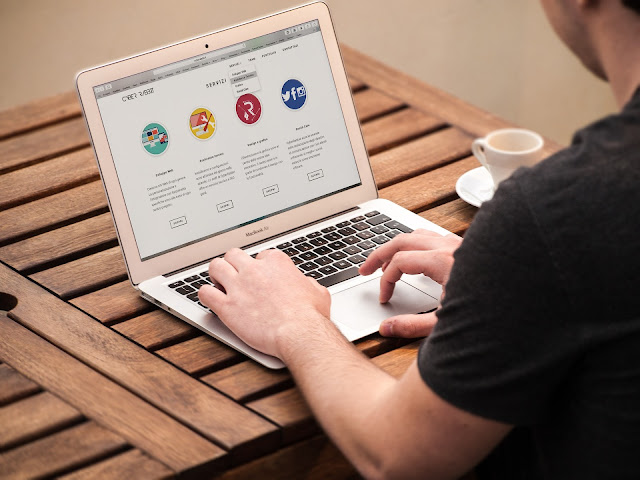Having a responsive website is key for reaching as much of your target audience as possible, in the most effective way possible. So, what steps can you take in order to ensure that your website is more responsive and ready for the coming year?
Keep It Simple
It can be tempting to go all out on your website to impress your visitors. However, by adding too many unnecessary additions, you can actually make your site slower to load and ultimately, put users off visiting your site in the future.
Having a more simplistic and minimalistic site provides users with a smooth and slick experience – regardless of whether they’re visiting on their phone, desktop, or tablet.
To achieve this, consider using a high-quality content management system (CMS) that’s user-friendly so that updates can be easily maintained. As gold-level Umbraco partners, we find that the Umbraco CMS is an ideal platform from which to build a powerful yet easy-to-use website that’s responsive and speedy.
With more and more people using their mobile phones to shop and search online, it’s important to think about how a very busy website would look to them. If it’s difficult to find their way around and they struggle to find what they’re looking for, then they are more than likely to give up and go elsewhere.
Having a simple and clear user interface will also have the added benefits of making your call to action stand out to visitors and making your site more accessible for a diverse audience.
Build Responsive Pages
As previously discussed, the chances are a large portion of your audience will be accessing your website via their smartphones, laptops, or tablets, all of which have a different-sized screen. This could mean that elements of your site that fit well on one sized screen will appear awkward or wrong on another.
If you have a homepage that contains a lot of links directing to other pages, testimonials from previous customers, call to actions, lots of text, etc., you may find that this is a very difficult design to transfer to a mobile screen. Consider what information is actually necessary to include and what will be most useful to your target audience.
Having a mobile-first strategy in mind when you create your site will make it much easier to only include the necessary information – not only will this help with having more responsive pages, it will also mean your whole site will be designed more efficiently as well – as potential customers may not always arrive at your homepage.
Having your site set up for smartphone accessibility will also offer users the benefit of being able to contact you more easily with instant access to contact numbers. This is a huge bonus for both the user and you, as the easier people can get in touch with you, the more likely they are to become loyal customers.
Make Your Site Quick to Load
With so much competition out there now, users are not patient when waiting for sites to load. If your site’s pages take a little longer to load, you’ll no doubt have noticed that your site’s bounce rate will be much higher. This is because people will sooner jump ship and head to a competitor than wait for the page to load, making it essential that you do all you can to reduce load times.
The other negative of a slow-loading site is that it will have a detrimental effect on your Google rankings. Google wants sites to be responsive as it makes them more user-friendly and beneficial for users. So if your site is taking longer than two or three seconds to load, then you need to look into why this could be (for example, images that need compressing), otherwise it will negatively impact your position in the Search Engine Results Pages (SERPs).
Choose Fonts Wisely
Visitors to your website don’t want to be struggling to read what you’ve written, so you should think carefully about the typography.
The font that is too small will make potential customers go elsewhere, so for a website that is truly responsive, you need to make sure that the font sizes you are using actually complement the device they’re being viewed on.
Something else to consider is that you’re not using too many typography styles. You want to make sure that you are sticking to your brand identity and not creating a confusing message for customers.
An important point to remember is to use Google Fonts on your website if possible as these are more recognized fonts that will not slow down your page load speed when Google is trying to find them.
Make Sure Your CTAs Stand Out
An effective website needs to have called to actions for your visitors to complete. You may want to direct them to buy an item from your store to subscribe to a newsletter or download an app, whatever it may be, it’s important to make this next step as clear as possible to users.
Make sure you include a primary CTA that stands out from the rest of the page – something that really grabs the attention of your users – and something that will work across all devices.
Include Interactive Elements
When you’re making sure your site is functioning correctly and loading quickly, don’t forget about making it engaging. You want it to delight those who visit!
It’s possible to achieve this by incorporating fun and interactive elements in your design choices.
Again, keep it simple. It’s not necessary to go overboard. Consider adding creative infographics, perhaps a quiz, or some animations.
All forms of visual content will have a positive effect on the site and those visiting it. Including videos and image content will have a humanizing effect and will really draw people in for more. Just make sure to keep all file sizes to a minimum to avoid impacting your load speed.
